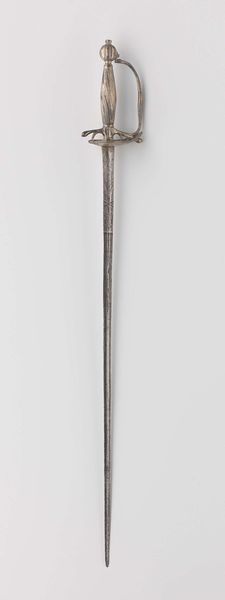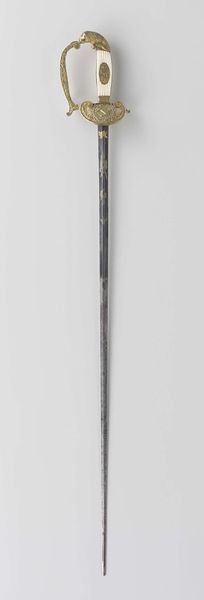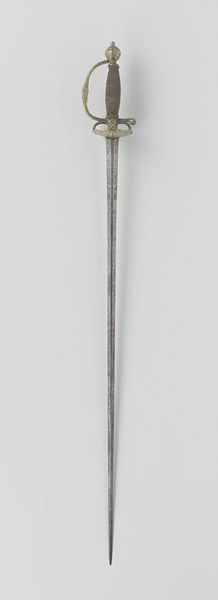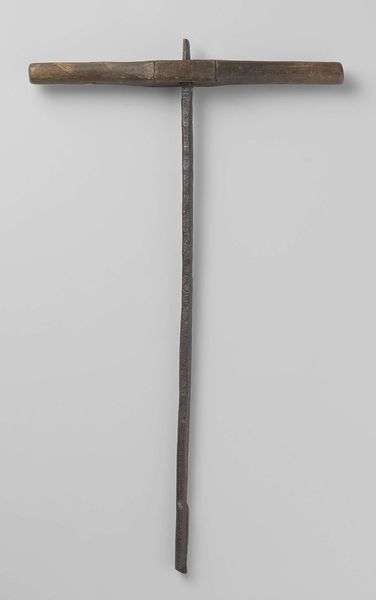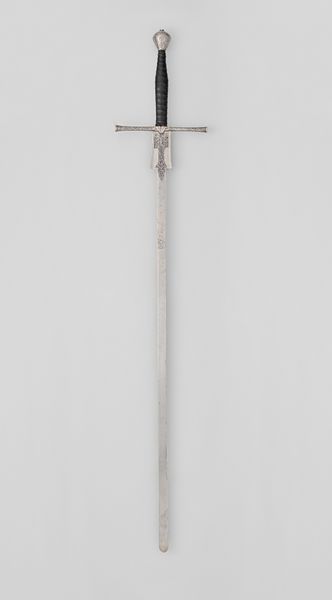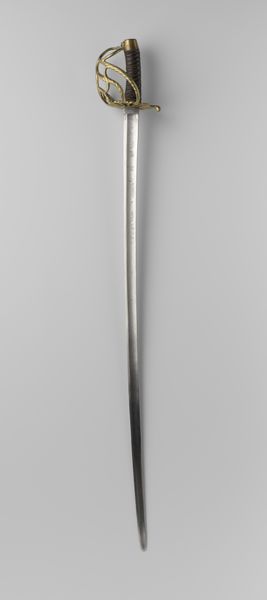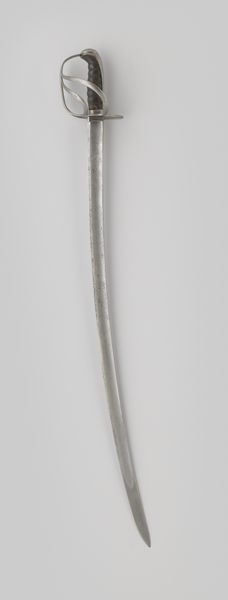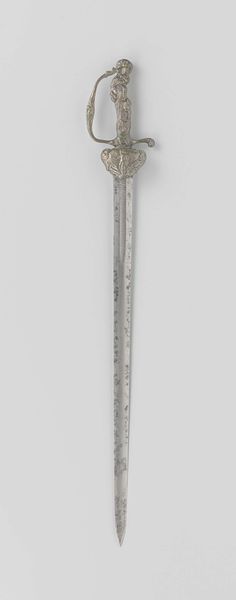
metal, sculpture
#
portrait
#
clear graphic shape
#
3d sculpting
#
3d model
#
baroque
#
3d printed part
#
rounded shape
#
metal
#
plastic material rendering
#
virtual 3d design
#
sculptural image
#
3d shape
#
sculpture
#
metallic object render
Dimensions: length 116 cm, width 10.5 cm, thickness 4.3 cm, weight 599 gr
Copyright: Rijks Museum: Open Domain
This ceremonial sword was crafted in the 17th century by Michiel Esselbeek. During this era, the Dutch Republic experienced a surge in maritime power and trade, deeply influencing its art and culture. Swords like these were symbols of authority, paraded in civic rituals and military ceremonies, reflecting the prevailing social hierarchies. The sword’s opulent design, with its ornate hilt, speaks to the theatricality of power. But what does it mean to glamorize violence? And how do objects like these reinforce gendered notions of power and dominance? Consider the emotional weight of such an object, both for those who wielded it and those who witnessed its display. It's not merely an object, but an embodiment of a particular moment in history.
Comments
rijksmuseum about 2 years ago
⋮
On the silver hilt of this sword small monsters merge in an unusual and amusing way with kwab motifs. Michiel Esselbeek came from Augsburg, an important centre of silversmithing in Germany. In Amsterdam he combined elements from Lutma’s style with his own inventions. Ornamental swords of this kind were probably worn by guardsmen on festive occasions.
Join the conversation
Join millions of artists and users on Artera today and experience the ultimate creative platform.
